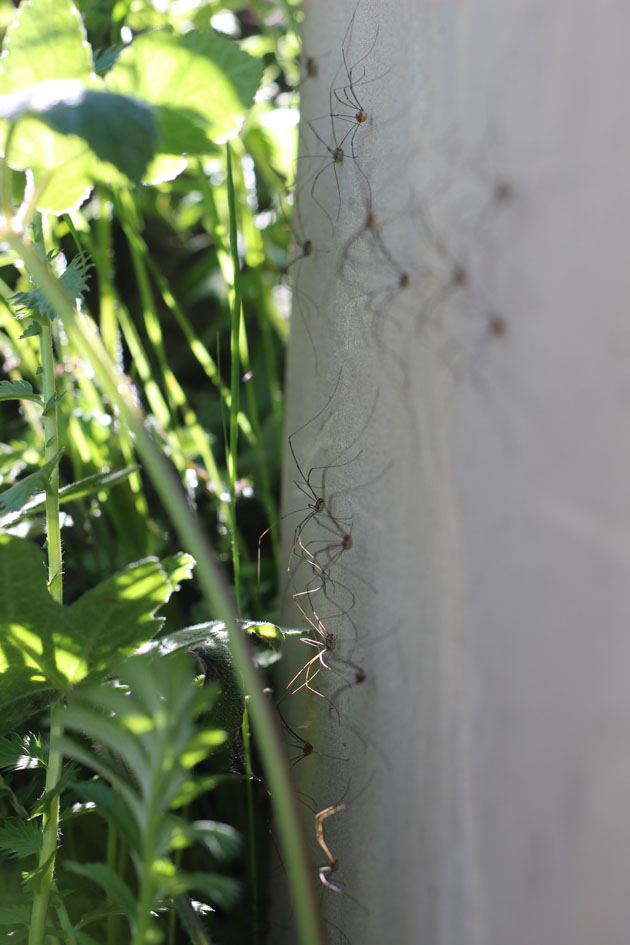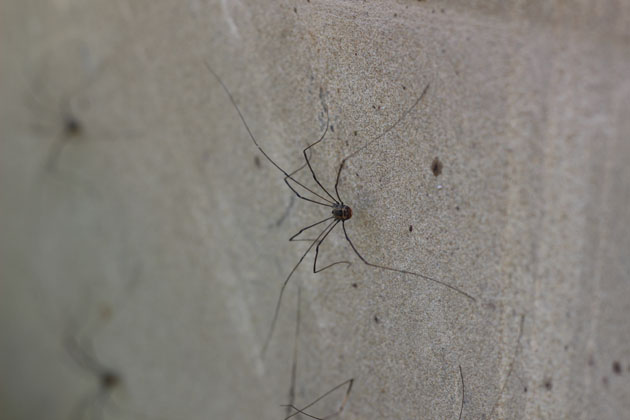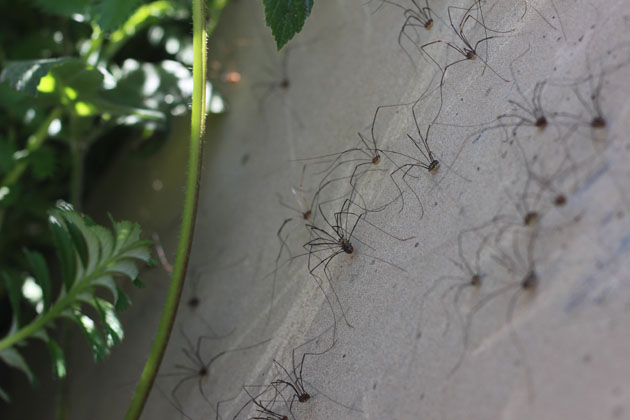Harvestman Stone

Pulling a slab of stone away from this block revealed an army of Harvestmen. It doesn’t seem to be known why they congregate in such huge numbers – but there they were, tangling and falling over each other as they scurried out of my way.
Though they look very much like spiders, having eight legs, they are not closely related – they don’t spin webs or produce venom. Their second pair of legs is slightly longer than the other three pairs. These legs are used as sensory organs to feel their surroundings and are constantly in motion as the creature moves, tapping all around.

When attacked, harvestmen are able to shed a leg as a defensive trick. Even after the leg becomes detached from the body it continues to jump and flick about. This distracts the predator while the harvestman makes its escape. They are able to shed up to four legs in this way, but they need to retain at least one of the sensory legs to survive.
Harvestmen are certainly not fussy eaters (they catch live prey using gluey hairs on their legs), they’ll eat just about anything from insects, plant material and fungi to decaying animals and bird droppings.
Well preserved fossils of Opiliones (their scientific name) have been found in 400 million year old cherts in Scotland showing them to be remarkably similar to those alive today.

Harvestmen are also sometimes called ‘shepherd spiders’ referring to how their unusually long legs reminded observers of the ways that some European shepherds used stilts to better see their wandering flocks from a distance.
